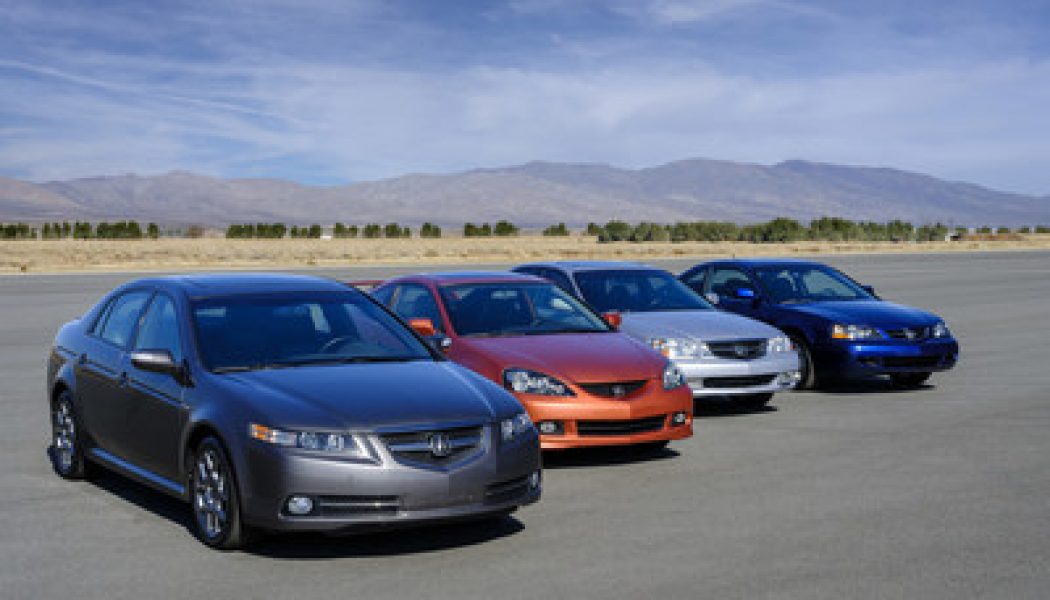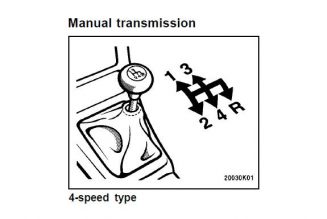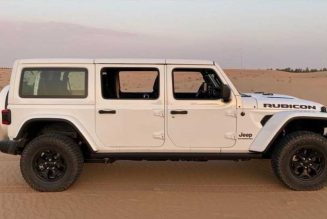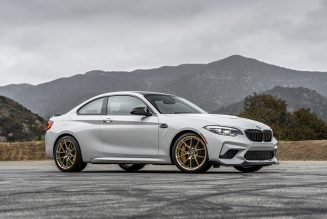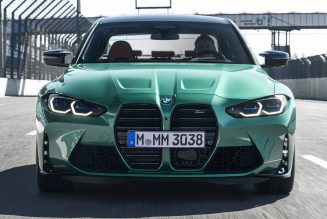Welcome to a role reversal no mid-2000s Honda enthusiast ever predicted. While U.S. customers rip around happily in the indomitable and long-forbidden Civic Type R, Acura‘s sharp-edged U.S.-friendly Type S sub-brand has been dormant on our shores for close to 13 years. It’s quite the bummer: While not as focused and deliciously hardcore as Type R models, Acura’s various Type S variants occupied a performance niche matched over the years only by a handful of German and Swedish rivals. They went a long way toward establishing Acura as the driver’s choice among Japanese luxury and premium brands.
At least, Type S was dormant. Now, the sporty treatment is back for 2021. Acura’s new TLX Type S is a serious entrant into the ultra-competitive compact performance-luxury sedan segment, squaring off against mainstays like the Audi S4 and BMW M340i, alongside newcomers like the Alfa Romeo Giulia and Genesis G70 3.3T. Our first drive of Acura’s TLX Type S hotshot is just less than a month away, and Acura kicked off festivities surrounding the Type S’s return with a drive of nearly every model to wear the nameplate.
2001 Acura CL Type S
It all began here. Buoyed by the success of the NSX and Integra, the second-gen CL coupe and TL sedan were the first to receive the Type S treatment, starting with the 2001 Acura CL Type S. Compared to their standard counterparts, the front-wheel-drive Type S twins packed a more powerful version of the standard J32A 3.2-liter V-6 engine. It delivered 260 hp and 232 lb-ft of torque via higher compression, a larger throttle body, and Type S-spec camshafts, intake valves, and cylinder heads.
A five-speed automatic transmission was the only option at launch, with a six-speed manual added only in the CL’s final model year of 2003. Regardless of door and transmission configuration, each CL Type S and TL Type S rode on stiffer springs with corresponding revisions to damping rates, and each boasted the addition of a rear anti-roll bar. Tires were more performance-oriented and wider than the regular rubber. Vehicle Stability Assist—kind of an early-gen stability/traction control system—was specific to the Type S.
In its time, this sharp premium coupe was like catnip for MotorTrend testers. Thumbing through our old tests and a subsequent long-term test-car review reveals the CL Type S’s addictive blend of ineffable daily usability and drop-everything-and-scoot attitude for the squiggly way home.
The 3.2-liter V-6 garnered the most praise. Dramatic adjectives like “wail” and “sonorous” pepper our original coverage; a comparison test between the Acura and the then-new E46 BMW 328Ci elicited aural comparisons to some seriously exotic stuff. “While both engines are quiet, smooth, and impeccably civil, getting into the throttle in the Type S brought forth an invigorating high-rev yowl that called to mind an old McLaren-Honda F1 engine,” we said. “That alone was worth a punch on the accelerator.”
We took our first blast in the old Type S on the swoopy and very speedy curves that comprise the first few miles of Angeles Crest Highway (ACH). The CL’s traditional hydraulic steering immediately made us misty-eyed for the days before electric-boosted steering became the norm. Acura won’t like us saying this, but the CL Type S feels strikingly like a hotted-up, kitted-out interpretation of the contemporary Honda Accord.
In museum-fresh condition with modern performance all-season rubber, the car holds up. The 2001 CL Type S howled through the eight-plus-mile ACH “slalom” to the turnaround point with surprising confidence. It’s not so much thrilling as it is impressively surefooted; it’s sprung more softly than most standard compact sedans in 2021, but everything loads up nicely after the initial weight transfer. Steering is heavy-ish—or maybe we’re just not used to hydraulic steering anymore—and the brakes are stout enough to handle almost 20 miles of moderately aggressive ass-hauling. This is a museum piece, after all.
We weren’t kidding about the engine. Performance-touched naturally aspirated V-6s are these days almost as rare as V-12s, and the J32A is a treat. Power is smooth and relatively linear, and enough for a 6.4-second 0-60-mph run during our testing. It sounds fantastic, especially when handled through the surprisingly competent manual-shifting mode.
All in, the 2001 Acura CL Type S is a beautifully balanced sport-touring coupe. It is not the most exciting of the Type S bunch, but certainly one of the most historically significant.
2007 Acura TL Type S
Acura offered the TL Type S in 2007 and 2008 following the then-new TL’s launch for 2004, and the Type S predictably upped the power and handling to befit the sub-brand.
The standard and familiar 3.2-liter J32 V-6 jumped to 3.5-liters in the Type S, and its output rose from 270 to 286 hp, and from 238 to 256 lb-ft. This is largely the same 3.5-liter V-6 shared with the larger Acura RL of the same era, with few of the significant valvetrain changes carried by the older CL and TL Type S’ 3.2-liter. As before, power goes to the front wheels, through either a five-speed automatic or six-speed manual.
The TL Type S built on the standard TL’s already solid chassis. Higher damper rates with a 400-percent increase in damper-mount stiffness kicked things off, complemented by new solid front and thicker rear anti-roll bars. Four-piston Brembo brakes in the front—a genuinely impressive novelty for the time—reined it all back to sanity when you got a little too excited with your right foot.
Back on ACH, the four-year difference between the prior CL and this TL Type S feels closer to a decade. The 2007 TL Type S scrambles, hops, and squirms its way to redline with hilarious torque steer that fades into a smooth rush toward the next gear. We made extensive use of the Type S’s exclusive wheel-mounted shift paddles—another in-period novelty—as we wound up the mountain; automatic transmissions in deprecated sports cars and sedans typically don’t stand up to the test of time, but the TL’s five-speed ‘box is reasonably quick and holds gears to redline, giving us a delicious draft of the 3.5-liter’s thrummy howl.
Solid performance, but the TL Type S’s handling confidence is superb. Excellent front-end grip belies the car’s 62/38 front/rear weight balance, and it’s noticeably more composed than the CL on ACH’s ultra-fast sweepers. The Brembos were essentially shot by the time we completed our blast, but we found ourselves relying less on early braking and instead exploring just how far the TL’s sticky balance would go without the need for touching the soggy left pedal.
Need a no-nonsense, decidedly buttoned-down front-wheel-drive sports sedan? Slap some summer tires and high-temp brake pads on a clean 2007-2008 Acura TL Type S, and have a ball. Call us when you get to the top of the mountain.
2001 Acura Integra Type R
Not a Type S, but a fantastic example of Honda/Acura at its ultimate best, and a great piece of comparison for the newer RSX Type S in attendance. If breathless reviews—both contemporary and modern—sky-high auction prices, and frenetic forum posts are believed, the Integra Type R is the platinum standard for the front-wheel-drive sport-compact genus. For many U.S. fans of the import scene—to borrow a bygone term from when this Integra was new—the Integra Type R is one of the G.O.A.T.s.
Actually, forget the JDM caveat; the Integra Type R is just one of the G.O.A.T.s, period. It’s a car that magazines, social media posters, and forums can’t seem to stop talking about.
They sure don’t build ’em like they used to. No, seriously—the idea of Acura presenting the seemingly delicate Integra to NHTSA for modern production is nearly as outrageous as Ford trying to pass off a 1966 Mustang. The Integra’s panels and construction feel paper thin and susceptible to bowing in the wind; hardly reality, but there’s a distinct lack of “stuff” keeping you isolated from the 1.8-liter zinger up front.
For that, we rejoice. The Integra Type R’s 1.8-liter B18C5 four-cylinder spins up like a tiny box of titanium gyroscopes, all the way to its 8,500-rpm redline. It buzzes the entire cabin as if every hollow nook and cranny is packed with Four Loko’d bees. Its 197 hp gave this engine a higher specific output than any Ferrari of the time, and it held the record until Ferrari took it back a few years later. Despite a tested 0-60-mph time of around 6.0-seconds, it doesn’t feel particularly quick; mid-range acceleration seems flat and unremarkable—until you look down and realize you’re almost to 70 mph.
In many ways, it feels like a four-wheeled 250-cc sport bike in both its propensity for revs, fabulously snappy five-speed manual transmission, and the darty, hypnotic way in which it changes direction. The Integra Type R is absurdly predictable and absolutely neutral, right up until you take a corner a bit too sharply and the rear end slides a smidge—enough to get you to slow down in this wrapper-fresh museum car. The best-handling front-wheel-drive car of all time? It maintains a strong argument.
Indeed, the Acura Integra Type R is truth in hype. Believe it, dream of it, and by all means drop those 80Gs at auction for a super-clean example if you want to wheel what is just about the most satisfying front-wheel-drive sport-compact car ever built.
2007 Acura RSX Type S
Or, save roughly $65,000 and pick up a clean Acura RSX Type S to satiate the same fix. Nothing else free-breathing and front-wheel drive that we’ve ever wheeled came remotely close to the Type R —right up until we hopped in the orange RSX Type S at the same event.
Heavier and ostensibly softer than the Integra, the RSX was the biggest surprise; contemporary tests pegged the RSX Type S at 0.1 g less on the skidpad compared to the Integra’s 0.92, but it sure didn’t feel sloth-like when caned on ACH.
Back-to-back with the Integra, the RSX felt quicker, torquier, and stickier. “Felt” is the key takeaway here; the aforementioned hard numbers don’t lie, and seeing as we’re not privy today to track time with either car, the Integra keeps its crown.
Regardless, what a blast. The 8,000-rpm redline of the RSX’s 2.0-liter K-Series four-cylinder isn’t quite the same as the Integra Type R’s 8,500, but it feels significantly torquier in the midrange, a boon as we pulled hard up ACH.
Steering is also heavier than the featherweight Integra’s, loading up beautifully through decreasing radius sweepers, complemented by strong brake bite and a deliciously tactile shift linkage. All inputs feel tremendously solid and athletic for a car so simple; it might not have the Integra Type R’s bonafides, but we had just as much fun on Angeles Crest in the RSX Type S.
